Review the coffee history of Brazil in the Coffee Museum
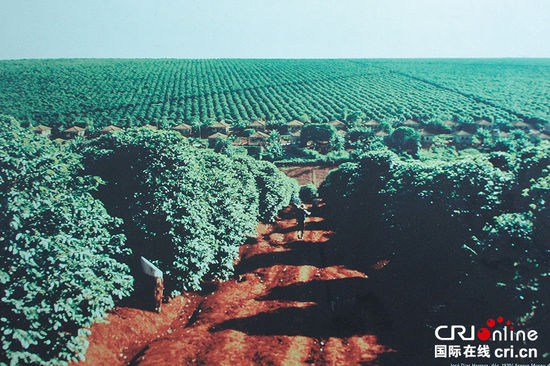
Coffee Manor in Brazil
International online report (Reporter Zeng Yun): Brazil is the largest coffee producer and the second largest coffee consumer in the world. Today, Zeng Yun, a reporter in Brazil, will take you to the Coffee Museum in Santos, the "city of coffee" in Brazil, to review the history of coffee in Brazil.
In Brazil, wherever you go, you can drink coffee in the morning or at night. Unlike the Italian concentrate or latte or cappuccino that most of us know, what Brazilians like most is the kind of ordinary coffee in a small cup, which is hot and mellow. What you can't imagine is how many cups of coffee Brazilians drink a day. When you ask a Brazilian on the street, no matter how old he is, he will tell you, "my day must begin with coffee and end with coffee." Drink with hot water whenever you want, basically 7 small cups a day, sometimes more. "
It is this brown grain that has always determined the trade balance of Brazil as a whole. However, coffee is not a product of Brazil, but also an "immigrant". Coffee originated in Ethiopia, and after that, coffee trees and seeds were brought to French Guinea and closely guarded as trade secrets. However, in 1727, Francesco Paletta, a Portuguese captain from Brazil, captured the heart of the then governor's wife in Cayenne, the capital of French Guinea, and succeeded in bringing coffee seeds from Africa to Brazil. Since then, coffee has adapted rapidly in Brazil, spreading from the north to the southeastern state of Sao Paulo. By 1845, Brazil had produced 45% of the world's coffee beans and had become the main source of income in the state of Sao Paulo. The Coffee Museum in Santos, Sao Paulo, formerly a coffee exchange, was built in the early 20th century, with stained glass windows and marble floors like a luxurious baroque palace. Marilia, executive director of the museum, said: "this is an exchange that specializes in coffee trading. For more than 40 years, coffee has been the main source of income for Brazil, especially the state of Sao Paulo." When you see this monumental building, so magnificent, it shows the wealth that coffee brings to Brazil, especially during that time, coffee led to industrial development and railway construction in Brazil, and brought new habits and culture to Brazil. "
In Brazil, coffee farms occupy almost all the valleys in the southeastern states of Sao Paulo, Minas, Saint Ling and Parana, and the harvest or reduction of Brazilian coffee can always have a direct impact on the global market. However, the export of Brazilian coffee is not as simple as bagging coffee and carrying it on board. Santos Port is the largest coffee export port in Brazil and even in the world. Brazilian coffee ranchers and middlemen gather in the exchange every year. Brazilian coffee has always been dominated by the export of raw beans. Its pricing is carried out here in a form similar to an auction. Marilia said: "in the past, a chairman sat in the main seat in this hall and began to announce bids. For example, the coffee quality of Jose Simouson, the owner of the estate, was so-and-so, and all coffee used to be marked by grade. Then middleman A will say how much my buyer quotes, middleman B may say,'my buyer offers a higher price, 'and so on, just like bidding. "
After the price was set, the coffee beans were transported by train or truck to the port of Santos, where workers had to pick and pack the beans and put bags of coffee beans on ships around the world. At that time, the labor force was cheap, and in order to catch the freighter that would leave port in the morning, they all had to work all night, an old man recalled.
When the reporter visited the coffee history of Brazil, labor, income, wealth. Economic benefits are the most heard content. On the cultural heritage of Brazilian coffee, and even coffee quality brands, coffee production technology and so on are rare, Marilia explained: "in Brazil, many people will say that coffee is the achievement of Brazil, Brazil is the coffee kingdom, and we want to show you, from the farmers on the farm, to the workers in the port, to the coffee appraisers and exporters in Santos, the economic effects of these coffee." At the same time, it has also changed our architectural history, literary history, art history, the history of coffee is closely related to the lives of Brazilians, but they do not realize that this is a property that needs our protection. "
To make Brazilians better understand coffee, changing drinking habits is the most direct way. Barista Harrison, who has been in the industry for eight years, told reporters that in the past, Brazilians used to drink coffee of poor quality and bitter taste, so Brazilians like to put a lot of sugar in their coffee, but now it is slowly changing. "Today, people know more about coffee," he said. There is more and more information about coffee, and people have the opportunity to learn about it. For example, we will introduce the differences of all kinds of coffee in museum cafes, Santos or other cities, so that you can try to taste the original taste of unsweetened coffee. "
The impact of coffee on Brazil and its people has never abated, and Brazil now leads the world in terms of coffee production, accounting for 32% of the world's production. And a new generation of Brazilians still love this brown-and-black drink. Harrison's son is just over two years old and has already started drinking black coffee made for him by his father. "my son has been drinking coffee since he was more than two years old, and he likes it very much. I will add some sugar to him, but he can also drink pure black coffee without sugar, just like drinking juice."
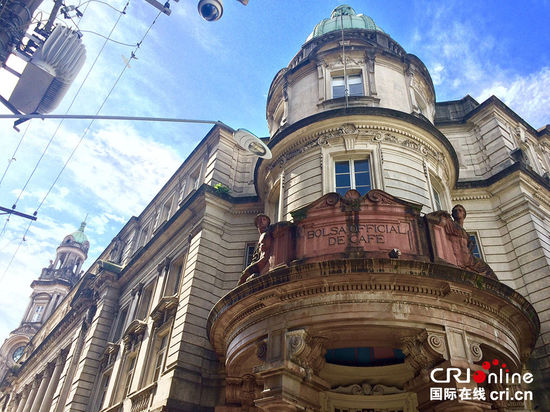
Coffee Museum in Santos (former Coffee Exchange)
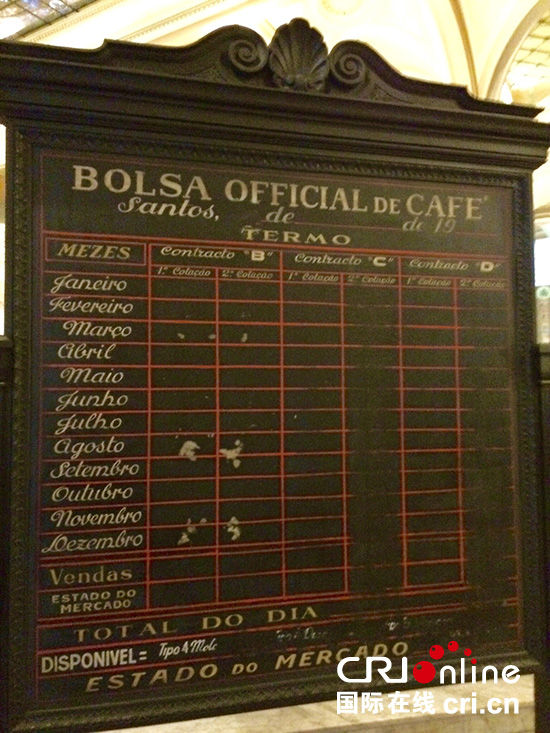
The price of coffee used to be traded.
Source: international online (Beijing)
Important Notice :
前街咖啡 FrontStreet Coffee has moved to new addredd:
FrontStreet Coffee Address: 315,Donghua East Road,GuangZhou
Tel:020 38364473
- Prev
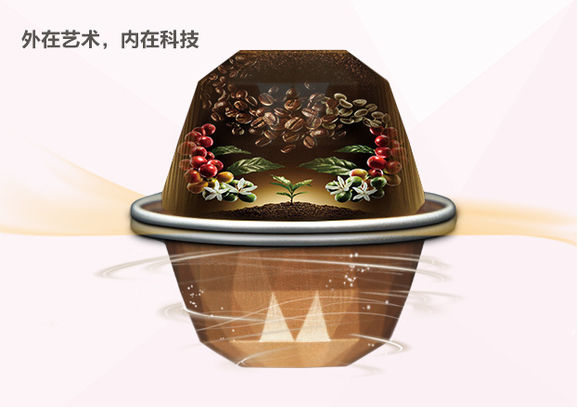
Why coffee must be drunk while it is hot!
When drinking different kinds of coffee, the temperature of the coffee is very important, basically all the coffee is required to drink while it is hot, so only those who do not know how to appreciate the coffee will order a cup of coffee and drink it for half a day. If you know coffee, you will never drink BELMOCA coffee for half a day! Similarly, in many cases, the temperature of coffee produced by baristas will be unstable, in fact, according to the season.
- Next
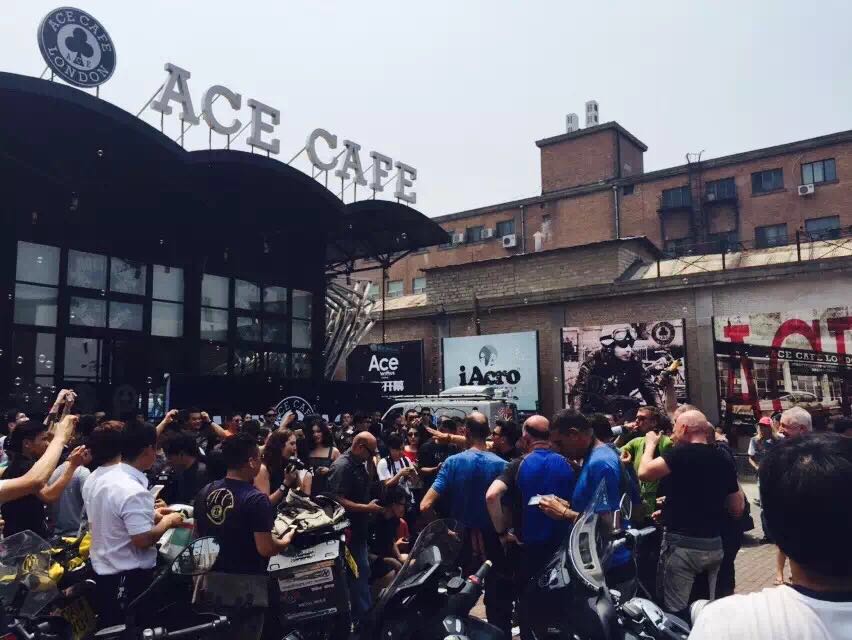
British Ace Cafe has officially entered China, challenging the 3W coffee model
Ace Cafe London, a motorcycle culture coffee shop with a history of 77 years in London, England, has attracted generations of people who are keen on motorcycle and rock culture because of its distinct personality since it was founded in 1938. Today, Ace Cafe London has become an international famous brand that integrates exhibition exchanges, clubs, catering and clothing, as well as the world.
Related
- Detailed explanation of the proportion of gold gouache in hand-brewed coffee? What are the Gold Cup Guidelines?
- What is the difference between the gold label rose summer and the red label rose summer in Guixia Village? Are Rose Summer 1931 and Gori Rose Summer?
- Cudi stores ban other brands of coffee?! Netizen: No problem
- Is it better to make coffee cold or hot? Why is it recommended to drink hot coffee?
- Lucky people collapsed! The store ceiling is full of AI surveillance cameras?!
- Law Enforcement Bureau? Mixue Ice City enters Zhengzhou BRT platform!
- Heavy! Nestlé has been exposed to consider selling blue bottle coffee!
- Compensation of 270 million yuan! Starbucks has been charged with violating labor laws more than 500,000 times!
- What are Xizhao coffee beans? Why did they become champion beans? How to rush to the manor on the dividing line in Colombia?
- What does channel effect mean in coffee? Why are there holes in the coffee powder cake?

